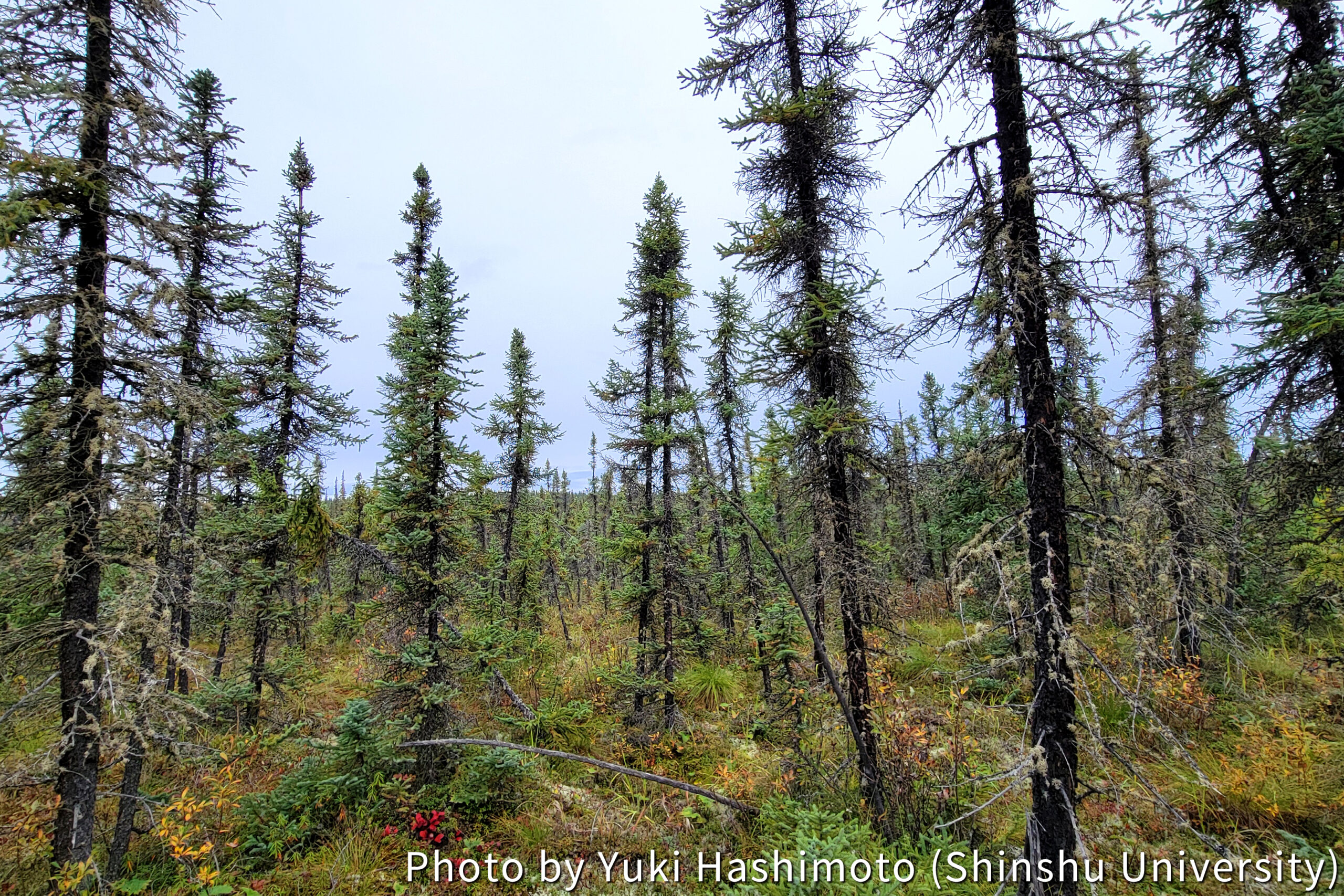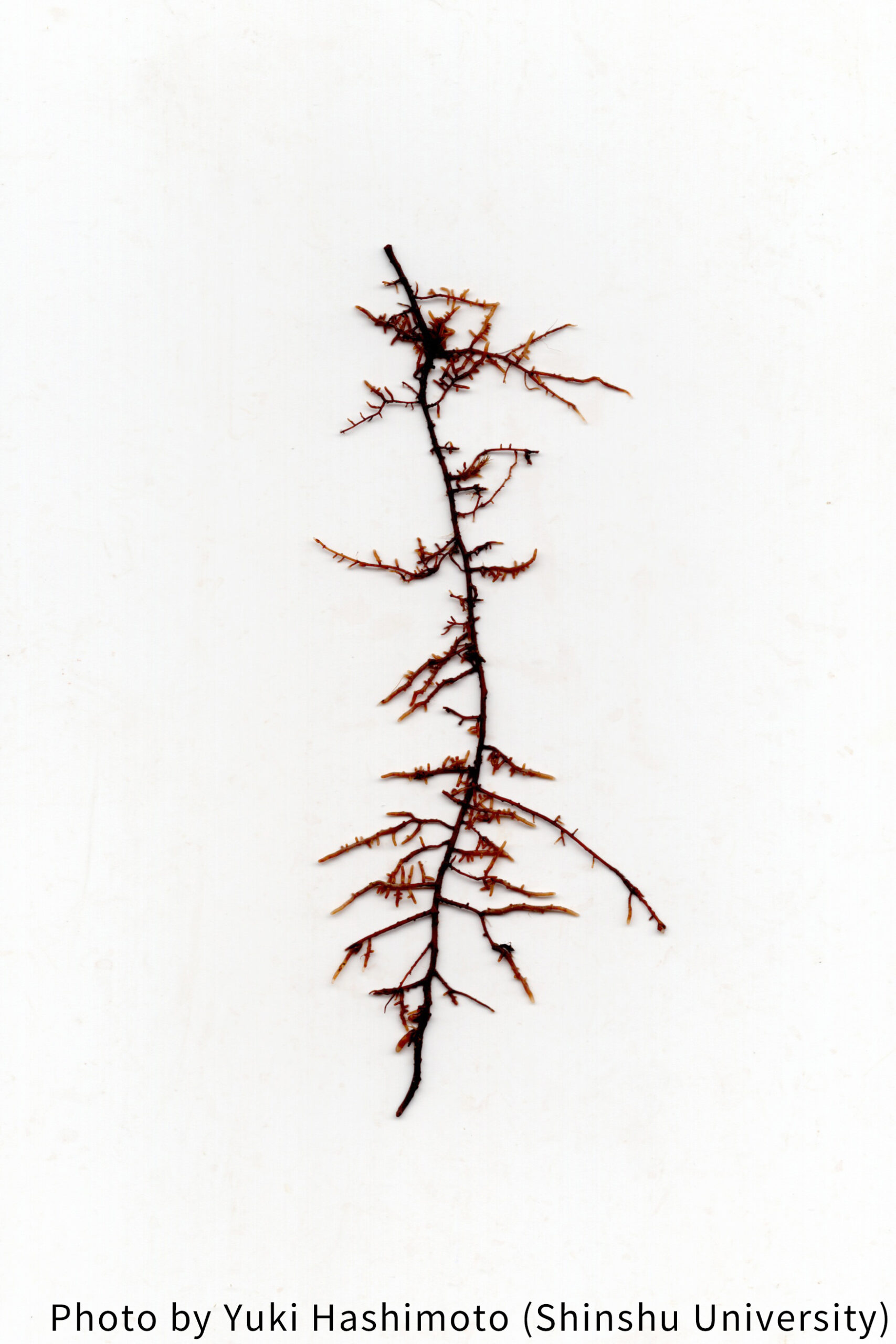Release date
Field research on tree roots in the Alaskan forests
Post Date:
Author: Yuki Hashimoto
(2nd-year Doctoral Student, Graduate School of Medicine, Science and Technology, Shinshu University)
I conducted field research in the Alaskan boreal forests in Fairbanks from August to September 2025. As global warming progresses, permafrost that has remained frozen for centuries is beginning to thaw in Alaska. Understanding and predicting how CO2 is emitted or absorbed in the forest ecosystem under the changing environment is a crucial challenge. I aimed to clarify how permafrost thaw affects root activity in boreal forests.
During the fieldwork, I investigated the tree roots in several forests with different permafrost thawing conditions. I focused on the roots of black spruce; an evergreen coniferous tree widely distributed across North America. (Photo 1)
-
 Photo 1: Black spruce forest on permafrost
Photo 1: Black spruce forest on permafrost
I measured the CO2 emitted through root respiration to assess how differences in soil conditions influence root growth and nutrient and water uptake. In addition, I analyzed the chemical compounds in the roots and used image analysis to examine variations in root morphology. (Photo 2, 3)
I found that root respiration rates were higher in the forests where permafrost had thawed and the soil had become drier. In contrast, in the sites where permafrost had thawed but the soil remained wet, the carbon dioxide emission from roots was lower. These findings suggest that not only increasing soil temperature but also various factors such as soil moisture and topographic variation have substantial effects on root activity and carbon dynamics in boreal forest ecosystems.
During my stay, I also exchanged ideas with researchers at the University of Alaska, receiving valuable insights on interpreting the results and planning future research. This collaboration gave me the foundation for future research partnerships. Using the data obtained from this study, I aim to further clarify the role of boreal forests in the global carbon cycle. Moreover, I will plan to strengthen cooperation with both Japanese and local researchers in Alaska to expand root studies across a broader range of forest ecosystems.




